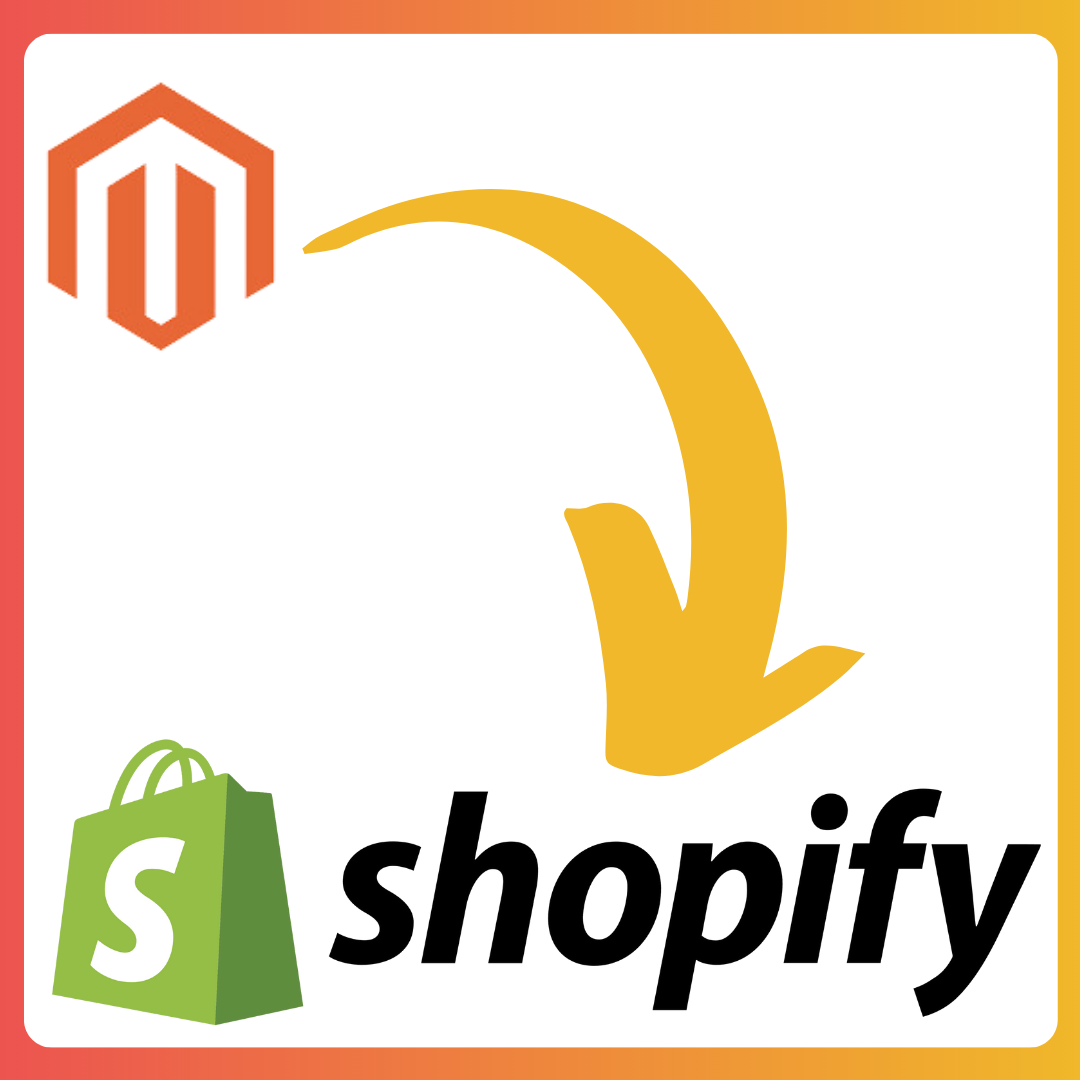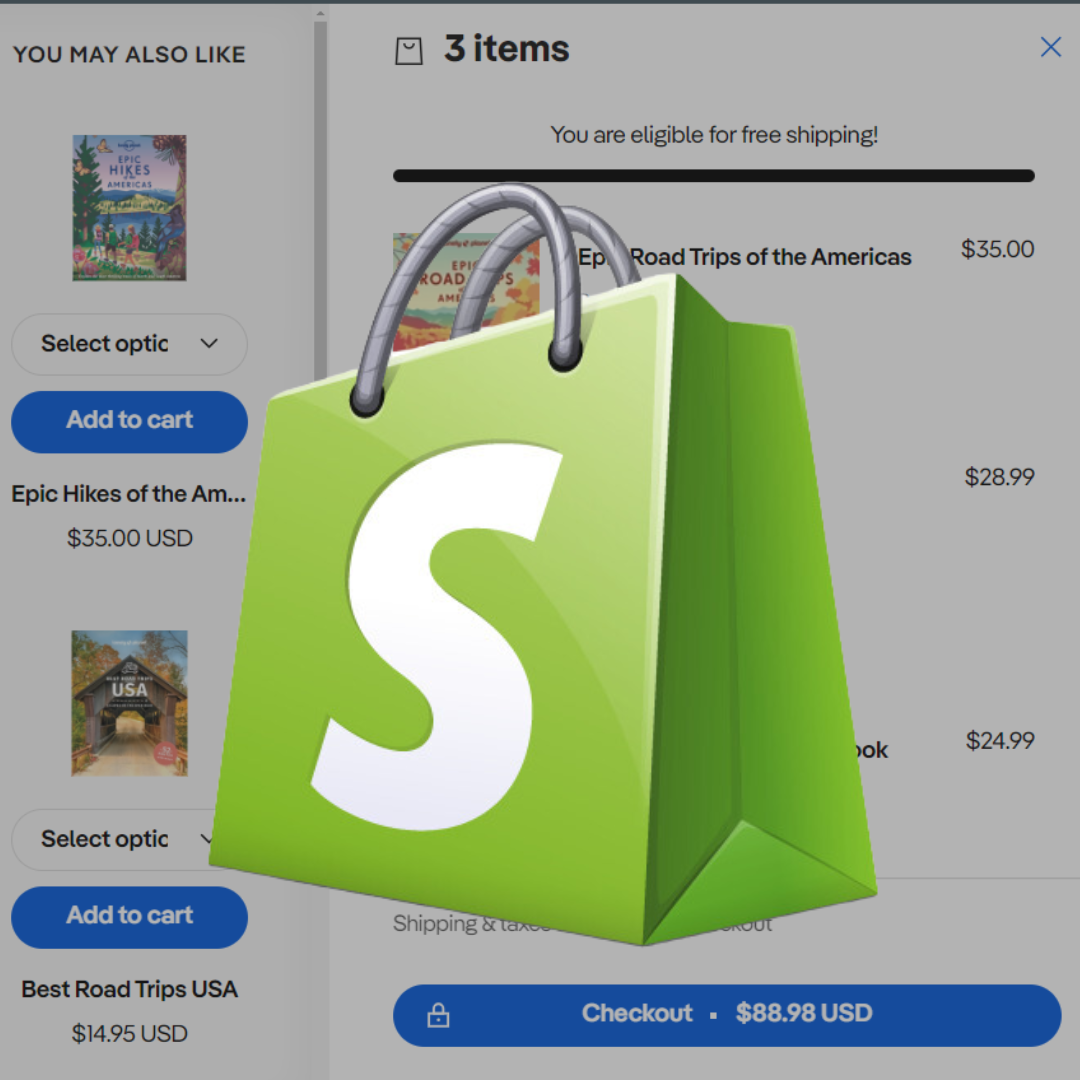So, you've decided to take the plunge and switch gears from Magento to Shopify for your online store—it's a pretty big move. Magento has been the go-to for many businesses, with its open-source charm, SEO wizardry, and knack for B2B setups. However, times have changed, and with Adobe swooping in and the eCommerce scene evolving, Shopify has become the go-to for enterprise companies, especially with its beefed-up B2B game.
In this blog, we'll define Magento to Shopify migration, then dive into the whys and hows of transitioning from a behemoth like Magento to Shopify. Finally, we'll show you the 10 essential steps a successful migration takes.
Magento to Shopify Migration Defined
A Magento to Shopify migration is not just a matter of moving files around—it's a complete replatform, and you consider it a significant business decision that will pay huge dividends in the future. It's not simply about shuffling data; it's about reimagining your eCommerce setup to take advantage of all of the tools that Shopify offers.
Picture it as revamping your store's blueprint, tweaking its look and feel, and recalibrating how things operate to make the most of Shopify's offerings. So, it's not just a migration; it's more like an exciting overhaul, complete with strategic planning, attention to detail, and a good dose of understanding both platforms inside and out.
In other words, it's not that easy, as you'll see when we discuss the steps needed for a successful migration. But before we do that, let's take a quick look at why Magento was popular and what makes Shopify a better choice.
Why Shopify is The Right Platform Over Magento
Magento has been a popular choice for eCommerce companies because of its open-source and SEO capabilities, scalability, and B2B abilities, as well as because it's popular and has a community following. Here are some of the reasons why Shopify is a better choice:
1. Open-Source Flexibility
While Magento's open-source nature allows for extensive customization, Shopify offers a robust App Store and API, providing enterprise companies with a massive range of apps and customization options. Additionally, Shopify's Liquid templating language enables advanced customization without the need for deep coding knowledge.
2. Robust SEO Capabilities
Shopify prioritizes SEO with built-in features like customizable meta tags, automatic sitemap generation, and clean URL structures. Moreover, Shopify's intuitive interface makes it easy for users to optimize product pages and content for search engines, ensuring high visibility and organic traffic. For all you Yoast fans out there, there is also a robust Yoast integration for Shopify.
3. Scalability and Customization
Shopify's cloud-based infrastructure ensures unparalleled scalability, effortlessly handling surges in traffic and sales without compromising performance. With Shopify Plus, enterprise companies access dedicated support, advanced analytics, and tailor-made solutions to meet their unique business needs.
4. B2B Capabilities
While Magento has traditionally been strong in B2B, Shopify Plus has made significant strides with features like custom pricing and account segmentation. You can now create companies with access to specific catalogs and pricing rules. You can also create content specific to B2B customers on all your pages. For example, you can show a quantity price bracket for only B2B customers.
Shopify's user-friendly interface and streamlined order management make it a compelling choice for B2B companies looking to streamline their operations and enhance UX. B2B is a big play for Shopify, and they are heavily investing in this functionality. We expect this to grow and tap into the unique requirements of B2B eCommerce companies.
5. Strong Community and Ecosystem
Shopify's thriving community of developers, partners, and users ensures continuous innovation and support. From expertly crafted themes to enterprise-grade apps, Shopify's ecosystem offers a wealth of resources to help enterprise companies build, grow, and optimize their online stores effectively.
Migrating Magento to Shopify - Step by Step
Step 1: Assess Your Current Magento Setup
Your first step is a comprehensive assessment of your existing Magento store. Document your website structure, product listings, customer data, and any customizations or extensions implemented. This step is crucial because it lays the foundation for understanding the scope and complexity of the migration process.
Step 2: Evaluate Your Business Goals Objectives
Define clear goals and objectives for migrating to Shopify, considering factors like:
- Scalability
- Ease of use
- Cost-effectiveness
- Long-term sustainability
Assess how Shopify aligns with your business needs and growth aspirations, and how you'd implement this.
Step 3: Get to Know Shopify
Familiarize yourself with Shopify's features, functionalities, and available integrations. Explore its B2B capabilities, including wholesale pricing, account management, and bulk ordering features. Compare these offerings with your requirements and identify any gaps you may need to address through customization or third-party apps.
Step 4: Plan Your Data Migration Strategy
Develop a comprehensive data migration strategy. Be sure to include product data, customer information, orders, and other relevant data sets. Determine the most suitable migration approach involving manual data entry, CSV imports, or leveraging migration tools and services.
Anticipate potential data mapping challenges and allocate sufficient resources for data cleansing and validation. Point out URL migration and ensure redirects are set up for every page.
Step 5: Customize Your Shopify Store
Tailor your Shopify store to meet your brand's unique requirements and design preferences. Shopify's customizable themes and intuitive editor make it possible to create a visually appealing and user-friendly storefront. Implement any necessary customizations or integrations to replicate essential features and functionalities from your Magento store.
There are two options when migrating platforms:
- Keep your site design as is. Doing this creates the least risk of loss of revenue, traffic, and conversion rate. Customers may be more inclined to repurchase the product if your site looks the same.
- Redesign your site with purpose. Be sure you think through the redesign thoroughly. Too often people migrate, and redesign but the product page loses so much functionality and their metrics tank.
Step 6: Test and Iterate
Conduct thorough testing of your Shopify store to ensure functionality, performance, and data accuracy. Test various scenarios, for example, product browsing, checkout processes, and backend operations. This is where you will identify and address any issues or discrepancies. Iterate your store design and configuration based on user feedback and testing results.
Step 7: Prepare for Downtime and Transition
Plan for a scheduled downtime during the migration process to minimize disruption to your business operations. Communicate proactively with your customers about the upcoming transition, including any temporary service interruptions or changes in functionality. Implement redirects and SEO best practices to preserve search engine rankings and mitigate any potential impact on organic traffic.
It's also important to consider inventory transfer. We suggest having inventory in a 3rd party ERP or inventory system before transferring so you don't have to worry about accurate inventory values.
Step 8: Execute Your Migration Plan
Execute your migration plan according to the established timeline and milestones. Coordinate closely with your team and Shopify support to ensure a smooth and seamless transition. Monitor the migration process closely, addressing any issues or roadblocks promptly to minimize delays and downtime.
Step 9: Post-Migration Optimization and Support
Optimize your Shopify store post-migration to maximize performance, conversion rates, and user satisfaction. Continuously monitor key metrics and analytics to identify areas for improvement and optimization. Use Shopify's extensive support resources, including documentation, forums, and customer support, to address any post-migration challenges or questions.
Step 10: Celebrate Success and Iterate
Celebrate the successful migration of your eCommerce store to Shopify. Acknowledge your team's collective efforts and dedication. Reflect on lessons learned throughout the migration process and identify opportunities for further refinement and optimization. Stay agile and adaptable as you continue to evolve and grow your online business on the Shopify platform.
One Step at a Time
Migrating your eCommerce store from Magento to Shopify is a significant undertaking that requires careful planning, strategic decision-making, and meticulous execution. While the process may pose challenges and complexities, the long-term benefits of transitioning to Shopify can outweigh the initial hurdles.
If you follow a systematic approach, using your available resources while focusing on your business objectives, you can navigate this transition successfully. It will help position your brand for continued growth and success. If you need more resources to do this autonomously, we'd love to help.




